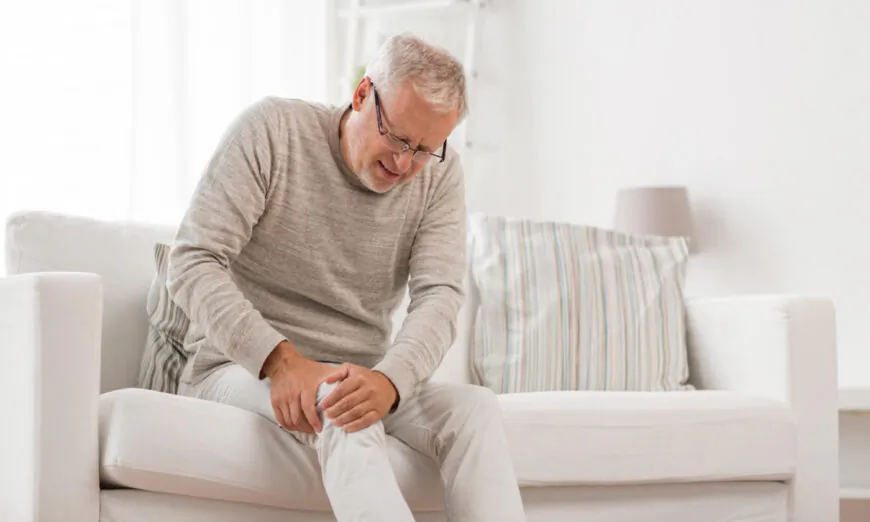I became your enemy because I tell you the truth
“You can fool some of the people all the time and all the people some of the time,
but you can’t fool all the people all the time.” A. Lincoln
In daily life, almost everyone has experienced knee joint pain. However, some people have pain that worsens and even becomes so severe that walking becomes difficult.
Knee joint pain can be roughly divided into the following stages based on a patient’s age:
- Gestation period: between zero and 20 years old.
- Preclinical period: between 20 and 40 years old.
- Clinical period: between 40 and 60 years old.
- Disability period: between 60 and 80 years old.
In other words, anytime after 40, knee joint pain is prone to occur.
Generally, the most common source of pain is the “medial crease” on the inner side of the knee joint. Friction on the medial side of the knee joint can cause physical damage (chondrocyte, interstitial destruction) or chemical corrosion from inflammation of a synovial membrane and the cartilage fragments produced by these injuries can cause third-degree friction and serious pain.
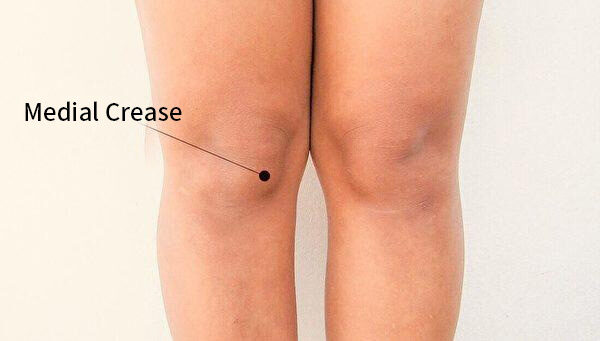
From an anatomical point of view, the medial crease of the knee joint is a joint capsule made of soft tissue. The crease will become inflamed and swollen under repeated friction and compression (this can happen up to 1 million times a year). In addition, the chemical enzymes released by this inflamed tissue will corrode the surrounding cartilage, resulting in knee joint degeneration, which could be more destructive than the original physical damage.
Key Reasons for Knee Degeneration and Pain
Clinical observation shows that many patients with knee joint degeneration and pain often have leg length discrepancy (one leg longer than the other), which causes uneven force exerted on the legs and knees while walking. After further inspection, most of these patients are found to have an issue of too-tight tendons in the knee-popliteal fossa (Weizhong acupoint), and even a large tendon knot formed in the knee-popliteal fossa, forming a cyst that seriously affects walking.
Because the tendons in the knee-popliteal fossa are too tight, the space to maneuver between the cartilages of the entire knee joint gets smaller, and the pressure increases. Long-term friction and inflammation tense the knee joint’s inner and outer tendons and accelerate knee degeneration, resulting in a vicious cycle. Therefore, when treating knee joint pain, properly adjusting the length of the legs (likely with the help of orthotic shoes) and relaxing the tendons in the knee-popliteal fossa will significantly improve the condition.
Unfavorable Knee Movements
From a practical point of view, all excessive and repeated knee-bending actions are bad for the knee joint and should be avoided as much as possible. For example:
- The knee joint is bent suddenly or bent at 90 degrees for a long time.
- Repeated bending and straightening of the knee joint (such as riding a bicycle).
- Repetitive squatting and kneeling.
- Going up and down stairs or hiking.
In addition, improper sitting and standing postures will also impact the knee joint. For example, when sitting with feet crossed, the body leaning sideways or standing on one side will cause pelvic skew, scoliosis, and leg length discrepancy. When the legs become unequal, muscle tension in both legs is uneven (especially the bladder meridian at the back), and the tighter leg is likely to feel more significant stress and more pain in the knee joint. Therefore, one should always have a proper sitting and standing posture—this is an essential yet straightforward secret to maintaining health.
When sitting down or standing up, put your palms on your knees and sit down or stand up slowly. This action can reduce the pressure on the knee joint and reduce damage.
3 Simple Exercises to Keep Healthy Knee Joints, Slow Degeneration
When you feel pain, jamming, or hear a friction noise on the inside of the knee joint, it may mean it is time to take better care of the knee. Here are three simple exercises that can help prevent degenerative knee pain.
1. Strengthen the Quadriceps Muscles
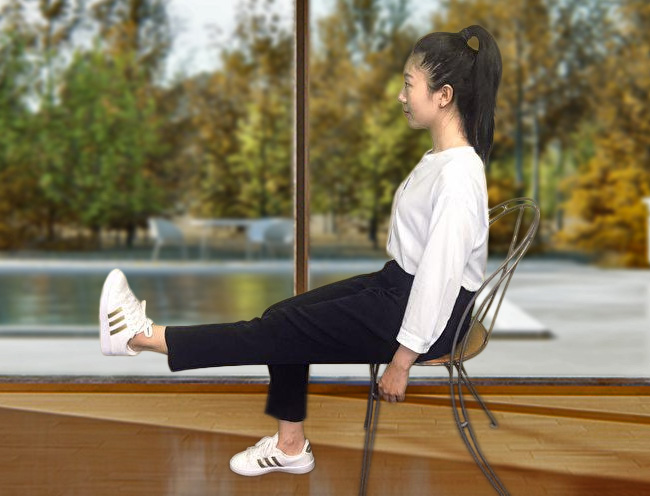
Strengthening the quadriceps muscles will help stabilize the knee joints. Straighten one foot with the toes turned upward in a sitting posture so thigh muscles become tense. Hold this posture for 10 seconds, then lower the calf slowly.
Do 10 to 20 times for each foot. The best time to do this exercise is when you first wake up and your feet are more flexible.
2. Knee Hug
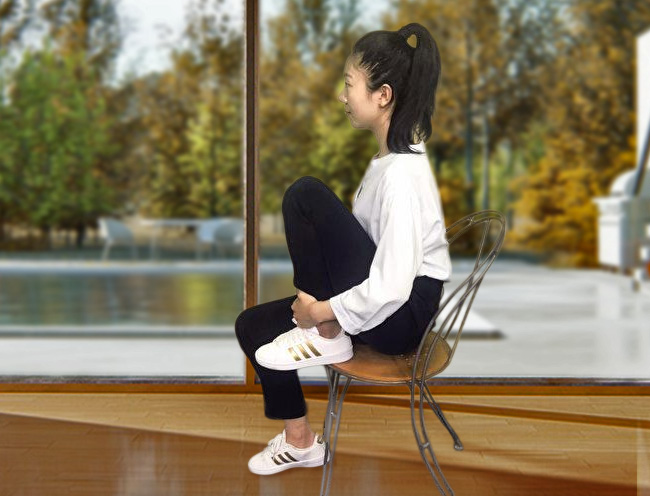
Hold one calf close to the ankle in a sitting position with both hands. Let the calf retract as far as possible toward the buttocks, then bend the knee joint to the maximum angle for 30 seconds.
After that, straighten the legs and gently bend and stretch the legs five times.
Repeat the above steps five times.
3. Knee Press
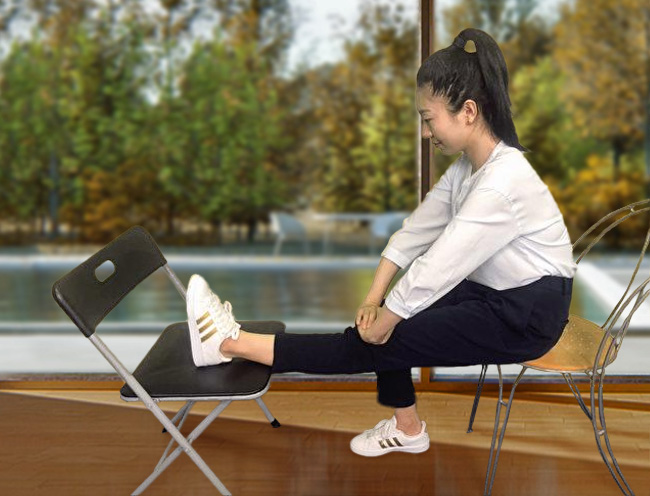
In a sitting position, straighten one leg so the heel and the far end of the calf are placed another chair. Press down on the knee with both hands from top to bottom for 30 seconds. Be careful not to shake or vibrate the joint.
Put the leg down, and then gently stretch it five times.
Repeat the above steps five times.
Long-term inflammation and pain will make the knee joint tenser and tenser. The knee hug exercise pulls the tendons in front of the knee joint while the knee press pulls them behind it. These two exercises will relax the tight knee joint, reduce pressure between the knee cartilages, and make the joint more flexible.
Take Note
- Usually, the more painful the knee joint is, the less desirable it is to move, and the condition will only worsen. When the knee joint is in pain, doing the above three exercises can slowly relieve the condition.
- Do the above exercises once in the morning, at noon, and at night.
Acupuncture or Massage Therapy to Enhance Knee Recovery
Acupuncture and massage therapy can help reduce inflammation and swelling to relieve pain due to knee joint degeneration. When the inside and outside tendons around the joint can relax, stress is reduced, and joint self-recovery is encouraged.
Local Acupoints Ashi, Dubi, and Weizhong
Getting acupuncture or pressing on these three acupoints can provide relief from certain kinds of knee pain.
Ashi Acupoint: Press directly to find the most painful point of the “inner fold” of the knee joint, and then apply acupuncture. You may experience a strong feeling of soreness, numbness, swelling, and pain when the needle is inserted. However, acupuncture used here can quickly relieve pain.
Dubi Acupoint: Acupuncture at this point can eliminate inflammation in the knee joint capsule and improve circulation disorders.
Weizhong Acupoint: When a cyst forms in the popliteal fossa of the knee, the quickest treatment is local bloodletting.
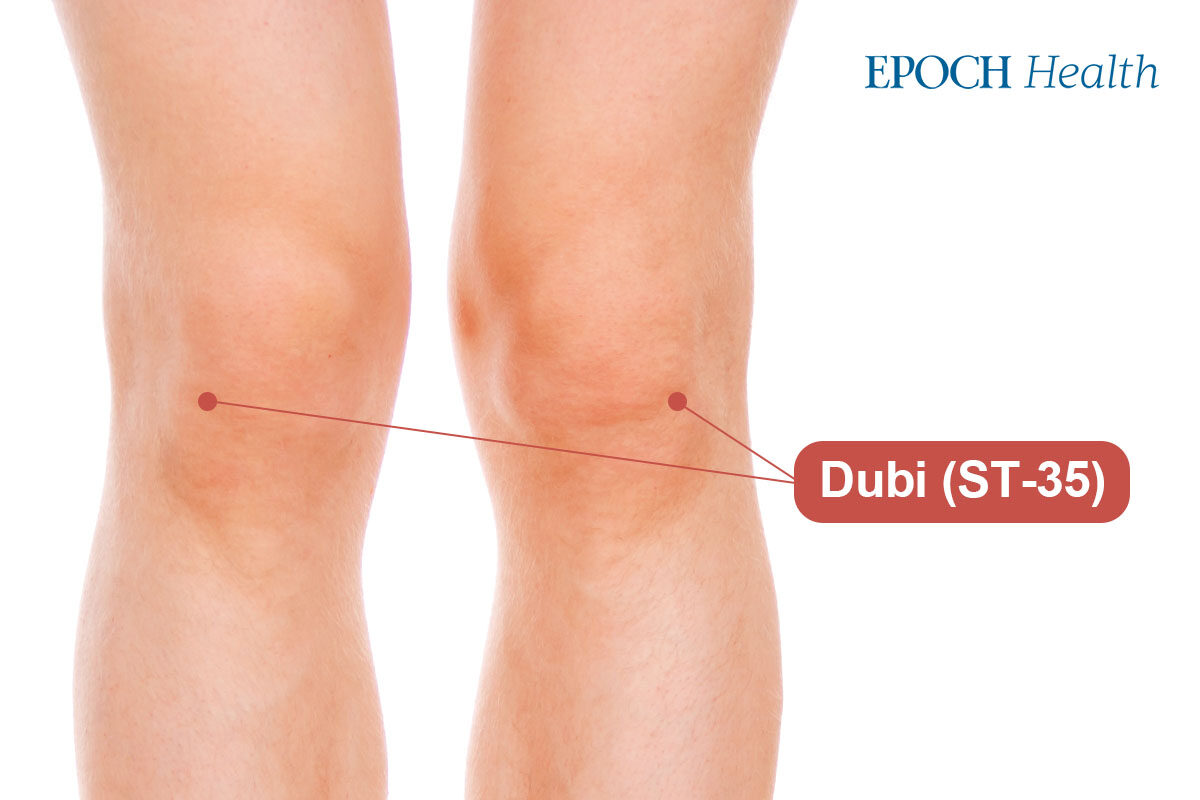
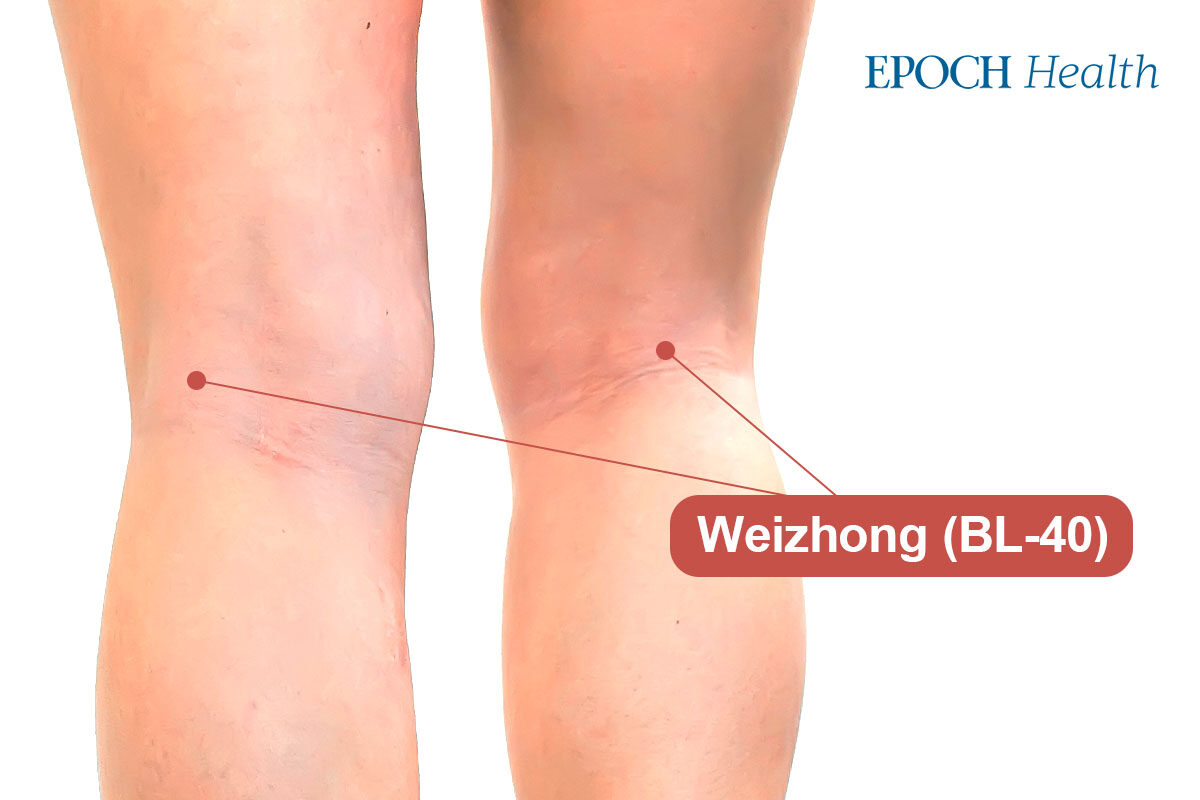
Taking Liangqiu and Xuehai above the knee, and Zusanli, Yanglingquan, Yinlingquan, and other acupoints below the knee can improve the circulation of qi (vital energy) and blood around the knee joint, relax the meridians, and make the knee joint more flexible.
Distant Acupoints Quchi, Chize, and Yanglao
These are usually done as a crossover. If there is pain in the left knee, acupuncture is applied on the Quchi and Chize points on the right elbow and the Yanglao point on the right hand, coupled with moderate movement of the left knee joint. When there is pain in the medial crease of the knee joint, acupuncture at the Chize point is very effective, too. The Quchi acupoint can relax the entire knee joint. The Yanglao acupoint can relax the whole bladder meridian, thus treating lower back pain and knee joint pain caused by muscle tightness in the knee-popliteal fossa around the Weizhong acupoint.
According to traditional Chinese medicine (TCM), the meridian is the body’s energy channel, which is responsible for transporting qi and blood. These are the basic substances that constitute the human body and maintain all physiological activities of human life. The human body has 12 main meridians corresponding to 12 internal organs, and the internal organs are connected to the body’s surface through the meridians. Acupoints are points on the meridians that have special functions. Stimulating the corresponding acupoints through acupuncture or massage can treat diseases of the corresponding viscera.
All it takes for Evil to triumph is for good people to do nothing
https://www.theepochtimes.com/health/age-gracefully-simple-exercises-to-prevent-knee-joint-pain-and-post-40-knee-degeneration_5277149.html?utm_source=goodeveningnoe&src_src=goodeveningnoe&utm_campaign=gv-2023-05-27&src_cmp=gv-2023-05-27&utm_medium=email&est=9%2F%2BlfWZzFBFGMApXIeVuow47R5SuiOSsXyz4ji%2BVuhAW5PoJiyxr%2Fbxr8mUc%2Bw6OxL4D
Michael Loyman
